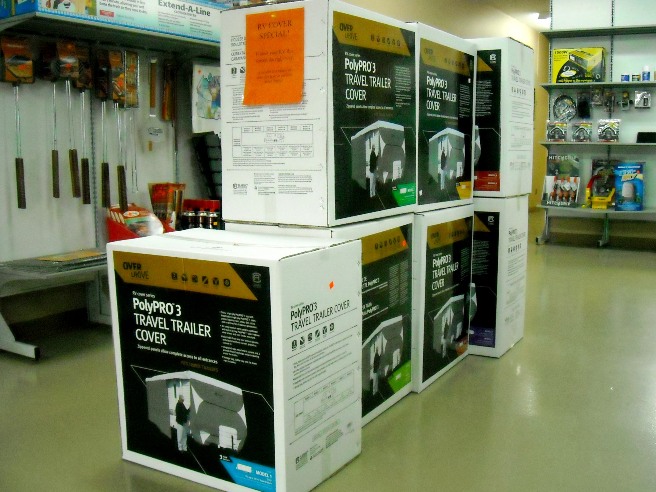Why should I buy an RV cover?
You put time, energy and finances into your RV purchase and an RV cover will protect your purchase in a number of ways.

The benefits of an RV cover
- Protects appearance
- Protects the resale value
- Keeps repair costs lower
What does an RV cover protect your RV from?
- UV degredation - and UV light causes:
- Color-fading and breakdown of paint and decals
- Gel-coated fiberglass oxidizes & loses luster
- Rubber seals around windows get chalky
- Tire sidewalls develop cracks
- Tree sap, bird droppings, acidic rain - which causes:
- Staining & paint erosion
- Moisture - like rain & snow, where the risks are:
- Stagnant water freezes and busts open a seam
An RV cover may also deter intruders

Why Classic RV PolyPRO3 Covers?
The PolyPRO3 model is well-priced and very well-suited for the Lower Mainland climate
The PolyPRO3 has a 3 year warranty
Classic is a great company to work with & they back up their warranty with excellent service
Common misconceptions about RV covers
- Difficult to install
Which is simply not true. If the RV cover is a quality cover, been put away dry & rolled up well, it is a relatively simple procedure - see below
- Costs a lot of money
Relative to the cost of an RV, a cover is inexpensive and it gives you an excellent return on your investment
- They can damage the finish
A good cover put on correctly will not damage BUT protect the finish
What are RV covers made of?
- Polypropylene fabric or polyester, with the layers doubled or tripled for additional protection on the roof section
- The fabrics are sometimes treated (or formulated) with different water and UV repellants
- The design must allow for moisture to evaporate otherwise mold and mildew form beneath
Higher-end and custom covers contain different construction materials with more protection and less billowing due to the tighter fit
How to install an RV cover
- Get a 2nd person to help, especially when you are on the roof
- Use a premade insulator, swim noodle, pipe insultor or tape to cover sharp edges - gutter spouts, antennas, accessories, etc. - so they don't rub against the RV cover material
- Take the RV cover up on the roof
- Determine the front of the cover (should be tagged)
- Roll out towards the back
- Roll down sides & front
- Climb down
- Fasten the cover to the RV
Or click the link to watch it on YouTube: Classic RV cover video
To take the RV cover off
- Get a 2nd person to help, especially when you are on the roof
- Ensure it is clean and dry
- Unfasten it from the RV
- Fold in the front, back and sides
- Roll it from the back to the front
- Place it in the storage bag or a clean trashcan
- Remove protective barriers on the sharp edges
Care of an RV cover
- Water and a soft brush
- Hang on a line to dry
Note: Using soap or putting it in a dryer is not recommended as it will damage the protective coating on the fabric.
Before you put it away for the winter, remember to have your RV winterized to protect the plumbing from freezing and cracking.
Click here to book your RV for Winterizing
